More DX Conference Previews
-The Top NBA Draft Prospects in the Big East
-The Top NBA Draft Prospects in the Pac-12
-The Top NBA Draft Prospects in the Big 12
Top NBA Draft Prospects in the SEC
(#1) De'Aaron Fox (Scouting Video)
(#2) Bam Adebayo (Scouting Video)
(#3) Malik Monk (Scouting Video)
#4, Luke Kornet, 7'1, Senior, Power Forward, Vanderbilt
Derek Bodner
After being overlooked for much of his high school career, Luke Kornet's late growth spurt, and some big performances on the AAU circuit, eventually put him on the map as a recruit. Kornet eventually settled on Vanderbilt, following in the path of his father, Frank Kornet, who helped lead the Commodores to back-to-back NCAA tournament appearances in the late 1980's.
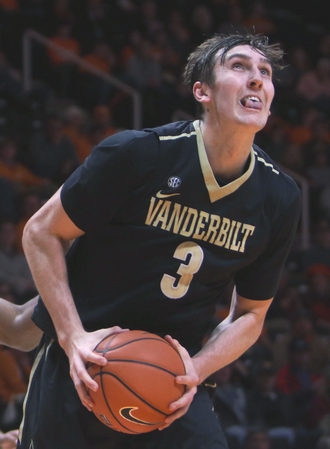
In many respects, Kornet, listed at 7'1", 250 pounds by Vanderbilt, showed progress as a junior for the Commodores. His rebounding, a big weakness in his game up to that point, improved from 6.0 rebounds per 40 minutes, pace adjusted, to 10.9. He blocked significantly more shots (1.9 per 40 minutes, pace adjusted, to 4.4), committed less turnovers (2.2 to 1.6), and got to the free-throw line more (25.7% free-throw rate to 32.9%).
Still, the season on the whole was slightly disappointing for the 7'1" Kornet, in large part because of his struggles shooting from the perimeter. After connecting on an even 40% of his 125 three-point attempts as a sophomore Kornet connected on just 28% as a junior, while taking a step back from the free-throw line as well. Kornet improved somewhat in the second half of the year, shooting 31.4% from three-point range in his last 14 games, compared to just 23.8% in the first 14, but he never truly regained the shooting touch that made him such an intriguing prospect.
Some of Kornet's struggles from the perimeter can come down to shot selection, as he's more than willing to take contested shots, shots off the dribble, and shots from well beyond the collegiate three-point line. Despite his struggles last year Kornet has great mechanics on his jump shot and a repeatable, quick shooting motion that should suggest his struggles last year can be overcome, but becoming a little bit more selective in his shot selection would certainly help him in that regard.
Kornet is mostly an opportunistic scorer outside of jumpers. He has solid touch around the basket and moves well without the ball, but he's mostly a below the rim player, despite his size. He can score on the occasional post-up when he has a size advantage with basic hook shots, but while he's made some minor progress in developing his upper body strength and looks like he has a frame that can continue to fill out, his lower body strength is still a weak point and he struggles to establish decent post position, usually resorting to a low-percentage turnaround jump shot rather than forcing his way inside with a move toward the basket.
Kornet does have some perimeter skills which gives him more than just pick and pop potential, though. While he has a slow first step and not much leaping ability, he does have the requisite ball handling skills to put the ball on the floor and attack closeouts, is capable of making quality decisions with the ball and shows an affinity for passing on the perimeter, and is relatively nimble on his feet, even if not all that quick. Nobody is going to mistake Kornet for a high-level shot creator at the next level, but the skills are there to be able to take advantage of the closeouts he'll receive if he's able to force defenders to respect his jump shot.
Defensively, it's a little bit harder to project Kornet at the next level. While he's able to use his 7'1" size and length to alter shots around the basket, the rest of his defensive game has quite a bit of way to go before he's not a liability on that end of the floor.
Kornet's lack of lower body strength makes it difficult for him to keep even mediocre post scorers from working their way to the basket, and he compounds that with an upright stance and a tendency to not engage until the opponent already has deep post position. He can overcome this at times with an occasional block thanks to his length, but his tendency to get pushed around is something that he's going to have to improve upon as he physically matures.
Kornet also struggles quite a bit on the perimeter, as he's relatively slow of foot, is frequently too upright and off balance, struggles to change direction, and doesn't have the greatest awareness as a defender. The combination of his struggles in the post and his inability to defend the perimeter is going to be tough to overcome, as he would be a liability regardless of whether he's defending the power forward or center position at this stage of his career.
On the plus side, Kornet did make drastic improvements in his output in the defensive glass, grabbing 19.7% of the available defensive rebounds when he was on the court. While this was a significant improvement over the 13.2% he grabbed as a sophomore, it's still an average-at-best figure for a seven-footer who was playing near the basket frequently, and his lack of lower body strength once again was a big factor in this facet of the game. He gave more consistent effort this past season, but he's still going to struggle to physically compete.
In some respects, Luke Kornet made a lot of improvements to round out his game this past season. Still, when you project out Kornet's role to the NBA, he's going to succeed or fail based on his ability as a jump shooter. Injuries and the poor team chemistry Vanderbilt suffered from last year are mitigating factors that likely contributed to the season-long slump he endured, and the form, touch, and potential are clearly there for his jump shot. If he can continue to develop as an all-around player, and regain the shooting touch he showed as a sophomore, he'll stay on the draft radar for a league desperate for big men who can stretch the floor.
After being overlooked for much of his high school career, Luke Kornet's late growth spurt, and some big performances on the AAU circuit, eventually put him on the map as a recruit. Kornet eventually settled on Vanderbilt, following in the path of his father, Frank Kornet, who helped lead the Commodores to back-to-back NCAA tournament appearances in the late 1980's.

In many respects, Kornet, listed at 7'1", 250 pounds by Vanderbilt, showed progress as a junior for the Commodores. His rebounding, a big weakness in his game up to that point, improved from 6.0 rebounds per 40 minutes, pace adjusted, to 10.9. He blocked significantly more shots (1.9 per 40 minutes, pace adjusted, to 4.4), committed less turnovers (2.2 to 1.6), and got to the free-throw line more (25.7% free-throw rate to 32.9%).
Still, the season on the whole was slightly disappointing for the 7'1" Kornet, in large part because of his struggles shooting from the perimeter. After connecting on an even 40% of his 125 three-point attempts as a sophomore Kornet connected on just 28% as a junior, while taking a step back from the free-throw line as well. Kornet improved somewhat in the second half of the year, shooting 31.4% from three-point range in his last 14 games, compared to just 23.8% in the first 14, but he never truly regained the shooting touch that made him such an intriguing prospect.
Some of Kornet's struggles from the perimeter can come down to shot selection, as he's more than willing to take contested shots, shots off the dribble, and shots from well beyond the collegiate three-point line. Despite his struggles last year Kornet has great mechanics on his jump shot and a repeatable, quick shooting motion that should suggest his struggles last year can be overcome, but becoming a little bit more selective in his shot selection would certainly help him in that regard.
Kornet is mostly an opportunistic scorer outside of jumpers. He has solid touch around the basket and moves well without the ball, but he's mostly a below the rim player, despite his size. He can score on the occasional post-up when he has a size advantage with basic hook shots, but while he's made some minor progress in developing his upper body strength and looks like he has a frame that can continue to fill out, his lower body strength is still a weak point and he struggles to establish decent post position, usually resorting to a low-percentage turnaround jump shot rather than forcing his way inside with a move toward the basket.
Kornet does have some perimeter skills which gives him more than just pick and pop potential, though. While he has a slow first step and not much leaping ability, he does have the requisite ball handling skills to put the ball on the floor and attack closeouts, is capable of making quality decisions with the ball and shows an affinity for passing on the perimeter, and is relatively nimble on his feet, even if not all that quick. Nobody is going to mistake Kornet for a high-level shot creator at the next level, but the skills are there to be able to take advantage of the closeouts he'll receive if he's able to force defenders to respect his jump shot.
Defensively, it's a little bit harder to project Kornet at the next level. While he's able to use his 7'1" size and length to alter shots around the basket, the rest of his defensive game has quite a bit of way to go before he's not a liability on that end of the floor.
Kornet's lack of lower body strength makes it difficult for him to keep even mediocre post scorers from working their way to the basket, and he compounds that with an upright stance and a tendency to not engage until the opponent already has deep post position. He can overcome this at times with an occasional block thanks to his length, but his tendency to get pushed around is something that he's going to have to improve upon as he physically matures.
Kornet also struggles quite a bit on the perimeter, as he's relatively slow of foot, is frequently too upright and off balance, struggles to change direction, and doesn't have the greatest awareness as a defender. The combination of his struggles in the post and his inability to defend the perimeter is going to be tough to overcome, as he would be a liability regardless of whether he's defending the power forward or center position at this stage of his career.
On the plus side, Kornet did make drastic improvements in his output in the defensive glass, grabbing 19.7% of the available defensive rebounds when he was on the court. While this was a significant improvement over the 13.2% he grabbed as a sophomore, it's still an average-at-best figure for a seven-footer who was playing near the basket frequently, and his lack of lower body strength once again was a big factor in this facet of the game. He gave more consistent effort this past season, but he's still going to struggle to physically compete.
In some respects, Luke Kornet made a lot of improvements to round out his game this past season. Still, when you project out Kornet's role to the NBA, he's going to succeed or fail based on his ability as a jump shooter. Injuries and the poor team chemistry Vanderbilt suffered from last year are mitigating factors that likely contributed to the season-long slump he endured, and the form, touch, and potential are clearly there for his jump shot. If he can continue to develop as an all-around player, and regain the shooting touch he showed as a sophomore, he'll stay on the draft radar for a league desperate for big men who can stretch the floor.
#5, Sacha Killeya-Jones, 6'10, Freshman, Power Forward, Kentucky
Without the benefit of extensive high school footage, we prefer to wait and see how Killeya-Jones performs as a freshman before adding to his DraftExpress profile, which already features a scouting report breaking down his strengths and weaknesses, as well as an interview.
#6, D.J. Hogg, Sophomore 6'8, Small Forward, Texas A&M
Matt Williams
Arguably the most highly regarded member of Texas A&M's vaunted 2015 recruiting class, which ultimately included five top-100 prospects, D.J. Hogg earned a spot in Billy Kennedy's rotation as a true freshman. Averaging 6.2 points and 2.9 rebounds over 18.2 minutes per game en route to SEC All-Rookie Team honors, Hogg followed up his freshman campaign with a strong showing in the highly competitive counselor games at adidas Nations, solidifying himself as a player to watch moving forward.

Standing 6'9 with a 6'9 wingspan and an improving frame, the Plano West HS (TX) product is a mixed bag from a physical perspective. He has very good size for his position, but lacks great length and would benefit from continuing to some additional muscle to his frame He's an impressive leaper off one foot when he can gather a head of steam, but lacks a degree of quickness attacking off the dribble as he's a fluid, but not freakish, overall athlete from an NBA perspective.
Primarily serving as a backup to Danuel House at the small forward position, but also sliding up to play a bit of power forward in smaller lineups a year ago, Hogg's size is a plus for the Aggies, but it doesn't factor all that prominently into how he makes an impact offensively. Rather, its Hogg's ability to knock down jump shots and make sound decisions with the ball that helped him carve out the minor role he played last season. Doing most of his damage spotting up on the perimeter and running the floor in transition,
Developing a reputation as a prolific jump shooter early in his prep career, knocking down a game-winning 19-footer at the buzzer to win a state championship as a high school senior, and connecting on a very serviceable 39% of his catch and shoot jump shots a year ago according to Synergy Sports Technology, Hogg is a very reliable set shooter with excellent touch from the perimeter. Shooting the ball with compact, consistent mechanics, Hogg does a nice job setting his feet quickly and getting his shot off in rhythm, even when running off screens or rising up over defensive pressure. He made just 33% of his shots from beyond the arc and 65% of his shots from the line last season, but appears very capable of improving on those numbers as a sophomore.
Hogg's ability to improve his shooting efficiency is important, as some 70% of his total shot attempts last season came from the perimeter. He has a terrific skill level and nice scoring instincts, but struggled when asked to create his own shot, as his lack of burst made is difficult for him to create separation of get all the way to the rim. Able to attack closeouts with some success and draw his defender into the air from time to time with a convincing shot fake, Hogg isn't incapable of attacking off the bounce as he's very smooth with the ball in his hands, but often drives to pass rather than score, doesn't seem very decisive or confident as he probes the defense, and has a lot of room to improve as a shot creator at the college level.
To Hogg's credit, he didn't force much offense to the rim year ago, picking and choosing his spots and being far more likely to fire up a deep jumper than venture inside. An opportunistic scorer off of cuts and fast break opportunities, the Texas native shows far more pop as a leaper than one might assume watching him play otherwise, but doesn't handle contact particularly well or always go up strong inside.
Defensively, Hogg has a lot of room to grow. He has some instincts, but lacks a degree of physicality, helps too eagerly at times giving up some easy jump shots, and lacks elite quickness staying in front of smaller players. He does compete with some amount of urgency, but needs to play stronger and make better decisions on this end.
Still very early in his college career, D.J. Hogg is a gifted shooter with excellent size for his position, two things that will surely work in his favor in the coming years. With Danuel House and Jalen Jones out of the picture, Hogg will have a massive opportunity to step up for the Aggies this season in their absence. A confident scorer with a strong feel for the game, it will be worth watching what kind of mark Hogg can make this year as he'll have his first real chance to establish himself as a bonafide NBA prospect.
Arguably the most highly regarded member of Texas A&M's vaunted 2015 recruiting class, which ultimately included five top-100 prospects, D.J. Hogg earned a spot in Billy Kennedy's rotation as a true freshman. Averaging 6.2 points and 2.9 rebounds over 18.2 minutes per game en route to SEC All-Rookie Team honors, Hogg followed up his freshman campaign with a strong showing in the highly competitive counselor games at adidas Nations, solidifying himself as a player to watch moving forward.

Standing 6'9 with a 6'9 wingspan and an improving frame, the Plano West HS (TX) product is a mixed bag from a physical perspective. He has very good size for his position, but lacks great length and would benefit from continuing to some additional muscle to his frame He's an impressive leaper off one foot when he can gather a head of steam, but lacks a degree of quickness attacking off the dribble as he's a fluid, but not freakish, overall athlete from an NBA perspective.
Primarily serving as a backup to Danuel House at the small forward position, but also sliding up to play a bit of power forward in smaller lineups a year ago, Hogg's size is a plus for the Aggies, but it doesn't factor all that prominently into how he makes an impact offensively. Rather, its Hogg's ability to knock down jump shots and make sound decisions with the ball that helped him carve out the minor role he played last season. Doing most of his damage spotting up on the perimeter and running the floor in transition,
Developing a reputation as a prolific jump shooter early in his prep career, knocking down a game-winning 19-footer at the buzzer to win a state championship as a high school senior, and connecting on a very serviceable 39% of his catch and shoot jump shots a year ago according to Synergy Sports Technology, Hogg is a very reliable set shooter with excellent touch from the perimeter. Shooting the ball with compact, consistent mechanics, Hogg does a nice job setting his feet quickly and getting his shot off in rhythm, even when running off screens or rising up over defensive pressure. He made just 33% of his shots from beyond the arc and 65% of his shots from the line last season, but appears very capable of improving on those numbers as a sophomore.
Hogg's ability to improve his shooting efficiency is important, as some 70% of his total shot attempts last season came from the perimeter. He has a terrific skill level and nice scoring instincts, but struggled when asked to create his own shot, as his lack of burst made is difficult for him to create separation of get all the way to the rim. Able to attack closeouts with some success and draw his defender into the air from time to time with a convincing shot fake, Hogg isn't incapable of attacking off the bounce as he's very smooth with the ball in his hands, but often drives to pass rather than score, doesn't seem very decisive or confident as he probes the defense, and has a lot of room to improve as a shot creator at the college level.
To Hogg's credit, he didn't force much offense to the rim year ago, picking and choosing his spots and being far more likely to fire up a deep jumper than venture inside. An opportunistic scorer off of cuts and fast break opportunities, the Texas native shows far more pop as a leaper than one might assume watching him play otherwise, but doesn't handle contact particularly well or always go up strong inside.
Defensively, Hogg has a lot of room to grow. He has some instincts, but lacks a degree of physicality, helps too eagerly at times giving up some easy jump shots, and lacks elite quickness staying in front of smaller players. He does compete with some amount of urgency, but needs to play stronger and make better decisions on this end.
Still very early in his college career, D.J. Hogg is a gifted shooter with excellent size for his position, two things that will surely work in his favor in the coming years. With Danuel House and Jalen Jones out of the picture, Hogg will have a massive opportunity to step up for the Aggies this season in their absence. A confident scorer with a strong feel for the game, it will be worth watching what kind of mark Hogg can make this year as he'll have his first real chance to establish himself as a bonafide NBA prospect.
#7, Devin Robinson, 6'8, Junior, Small Forward, Florida
Jonathan Givony
The #28 prospect in the 2014 high school class according to the RSCI, Devin Robinson had an uneven freshman campaign, bouncing in and out of Billy Donovan's starting lineup and struggling to be consistently productive or efficient on either end of the floor. With Donovan moving on to coach the Oklahoma City Thunder, in came Mike White from Louisiana Tech, who led Florida to an NIT appearance and was able to get a little more out of the enigmatic Robinson as a sophomore.
Robinson contemplated entering his name in the 2016 Draft to gauge his standing among NBA teams, but was unable to once medical tests conducted after the season revealed a stress fracture in the navicular bone of his left foot. He underwent surgery in April and was scheduled to be sidelined for 4-6 months, and has indeed yet to be fully cleared to play, even if that is likely to happen soon according to reports.
The injury was a setback considering how much the 21-year old Robinson could have used a full off-season to work on his body, skill-set and feel for the game, all of which have considerable room to grow still.

Robinson passes the eye test and then some, as he has excellent size and length for the small forward position, to go along with an ideal basketball frame and smooth athleticism. His body hasn't filled out quite as much as some may have hoped when he first burst onto the scene at the 2013 adidas EuroCamp, particularly in the lower body, as he has narrow hips and very thin legs and quads that hamper him on both ends of the floor. Being unable to work on his lower body all summer was certainly not ideal in that regard.
Offensively, Robinson operated primarily as a floor-spacing combo forward for the Gators, who runs the court in transition and occasionally crashes the offensive glass. Almost half of his field goal attempts came from beyond the arc, and he was able to convert a solid 34% of them as sophomore, up from 26% as a freshman. His free throw percentage also rose from 64 to 77%, which is another indication of his improvement as a perimeter shooter, and a very important factor for his NBA stock.
Beyond the numbers, Robinson boasts a compact and repeatable shooting stroke with his feet set, and proved to be fairly reliable in catch and shoot situations. His form tends to break down somewhat when closely contested or forced to shoot off the dribble, as his release isn't ultra-quick, and he doesn't have the most natural touch.
Although able to attack closeouts in a straight line, anything more than that is mostly an adventure for Robinson at this stage, as his ball-skills are very much a work in progress. He struggles to create space for himself in the half-court, and doesn't have the ability to get low with the ball, change speeds, directions or hands, or find the open man if the defense rotates towards him.
A smooth leaper off two feet, Robinson can finish around the basket with authority off cuts or running the floor in transition, but his lack of lower body strength is an issue when trying to use his athleticism around the rim off of one foot in the half-court. He looks very off balance on many of his attempts inside the paint, crumbling in traffic at the first sign of contact, and not being particularly crafty or creative using the glass. His rudimentary ball-handling ability doesn't do him too many favors in this area, as when he is able to create a driving angle to the basket, he often has a defender glued to his hip, leading to difficult attempts.
Robinson's passing ability is also in need of refinement, as he generated just 17 assists in 832 minutes last season, or one every 49 minutes he was on the floor. His 4% assist percentage would be considered poor for a center, let alone someone expected to see major minutes on the perimeter. To Robinson's credit, he didn't turn the ball over too frequently (9% TO%), as he simply wasn't asked to do much ball-handling for the Gators, something that might change somewhat this season as he likely inherits some offensive responsibility from departed combo forward and leading scorer Dorian Finney-Smith.
Defensively, Robinson showed some interesting things at times last year, particularly when tasked with guarding opposing ball-handlers, something he can do fairly impressively. He can get in a low stance, move his feet fluidly and make it very difficult for smaller players to get their shot off with his length.
With that said, Robinson has a long ways to go in this area to reach his full potential, as his average combination of technique, awareness and intensity often makes him far less effective than you'd hope. He has a tendency to fall asleep at times in his stance, losing his focus off the ball and being a split-second late with his reactions, resulting in wide open looks on the perimeter. That's part of the reason why Robinson has averaged a paltry 1.0 steals and .9 blocks per-40 thus far in his career, despite his terrific physical tools. He also doesn't always fight over the top of screens due to his lack of lower body strength, and can get pushed around mercilessly inside by stronger players. Players his size are increasingly used as floor-spacing PFs in todays' NBA, but it might be a while until Robinson is able to do so effectively.
It will be interesting to see what kind of season Robinson is able to put together as an underclassman, as the Gators will certainly be hoping to make a return to the NCAA Tournament after missing out for the last two years. They'll need Robinson to make strides on both ends of the floor and show he has the mentality to start to reach the significant potential he showed earlier on in his career.
The #28 prospect in the 2014 high school class according to the RSCI, Devin Robinson had an uneven freshman campaign, bouncing in and out of Billy Donovan's starting lineup and struggling to be consistently productive or efficient on either end of the floor. With Donovan moving on to coach the Oklahoma City Thunder, in came Mike White from Louisiana Tech, who led Florida to an NIT appearance and was able to get a little more out of the enigmatic Robinson as a sophomore.
Robinson contemplated entering his name in the 2016 Draft to gauge his standing among NBA teams, but was unable to once medical tests conducted after the season revealed a stress fracture in the navicular bone of his left foot. He underwent surgery in April and was scheduled to be sidelined for 4-6 months, and has indeed yet to be fully cleared to play, even if that is likely to happen soon according to reports.
The injury was a setback considering how much the 21-year old Robinson could have used a full off-season to work on his body, skill-set and feel for the game, all of which have considerable room to grow still.

Robinson passes the eye test and then some, as he has excellent size and length for the small forward position, to go along with an ideal basketball frame and smooth athleticism. His body hasn't filled out quite as much as some may have hoped when he first burst onto the scene at the 2013 adidas EuroCamp, particularly in the lower body, as he has narrow hips and very thin legs and quads that hamper him on both ends of the floor. Being unable to work on his lower body all summer was certainly not ideal in that regard.
Offensively, Robinson operated primarily as a floor-spacing combo forward for the Gators, who runs the court in transition and occasionally crashes the offensive glass. Almost half of his field goal attempts came from beyond the arc, and he was able to convert a solid 34% of them as sophomore, up from 26% as a freshman. His free throw percentage also rose from 64 to 77%, which is another indication of his improvement as a perimeter shooter, and a very important factor for his NBA stock.
Beyond the numbers, Robinson boasts a compact and repeatable shooting stroke with his feet set, and proved to be fairly reliable in catch and shoot situations. His form tends to break down somewhat when closely contested or forced to shoot off the dribble, as his release isn't ultra-quick, and he doesn't have the most natural touch.
Although able to attack closeouts in a straight line, anything more than that is mostly an adventure for Robinson at this stage, as his ball-skills are very much a work in progress. He struggles to create space for himself in the half-court, and doesn't have the ability to get low with the ball, change speeds, directions or hands, or find the open man if the defense rotates towards him.
A smooth leaper off two feet, Robinson can finish around the basket with authority off cuts or running the floor in transition, but his lack of lower body strength is an issue when trying to use his athleticism around the rim off of one foot in the half-court. He looks very off balance on many of his attempts inside the paint, crumbling in traffic at the first sign of contact, and not being particularly crafty or creative using the glass. His rudimentary ball-handling ability doesn't do him too many favors in this area, as when he is able to create a driving angle to the basket, he often has a defender glued to his hip, leading to difficult attempts.
Robinson's passing ability is also in need of refinement, as he generated just 17 assists in 832 minutes last season, or one every 49 minutes he was on the floor. His 4% assist percentage would be considered poor for a center, let alone someone expected to see major minutes on the perimeter. To Robinson's credit, he didn't turn the ball over too frequently (9% TO%), as he simply wasn't asked to do much ball-handling for the Gators, something that might change somewhat this season as he likely inherits some offensive responsibility from departed combo forward and leading scorer Dorian Finney-Smith.
Defensively, Robinson showed some interesting things at times last year, particularly when tasked with guarding opposing ball-handlers, something he can do fairly impressively. He can get in a low stance, move his feet fluidly and make it very difficult for smaller players to get their shot off with his length.
With that said, Robinson has a long ways to go in this area to reach his full potential, as his average combination of technique, awareness and intensity often makes him far less effective than you'd hope. He has a tendency to fall asleep at times in his stance, losing his focus off the ball and being a split-second late with his reactions, resulting in wide open looks on the perimeter. That's part of the reason why Robinson has averaged a paltry 1.0 steals and .9 blocks per-40 thus far in his career, despite his terrific physical tools. He also doesn't always fight over the top of screens due to his lack of lower body strength, and can get pushed around mercilessly inside by stronger players. Players his size are increasingly used as floor-spacing PFs in todays' NBA, but it might be a while until Robinson is able to do so effectively.
It will be interesting to see what kind of season Robinson is able to put together as an underclassman, as the Gators will certainly be hoping to make a return to the NCAA Tournament after missing out for the last two years. They'll need Robinson to make strides on both ends of the floor and show he has the mentality to start to reach the significant potential he showed earlier on in his career.













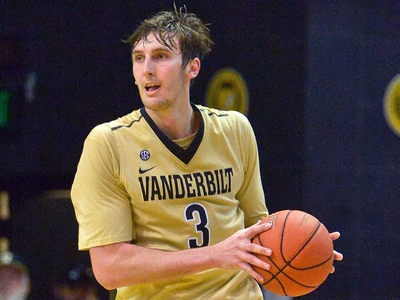









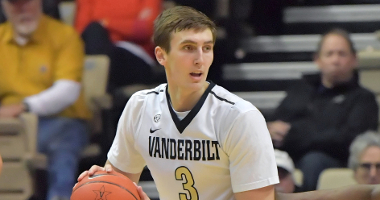

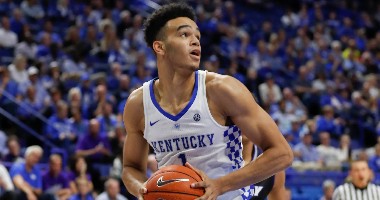

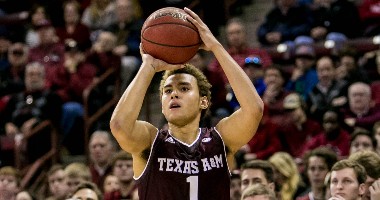

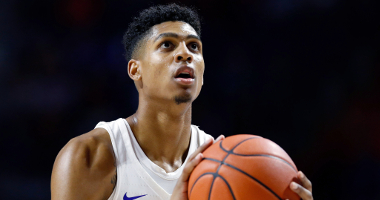





Comments